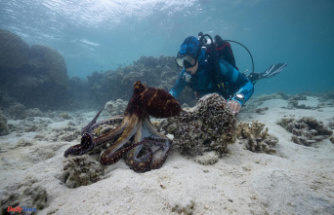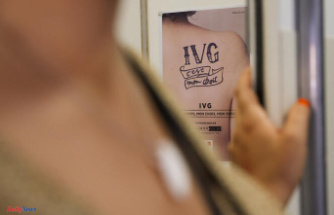Sure, cycling is a lot of fun when it's warm and sunny. But even in the dark months, many depend on their bikes - a few tips will help to arrive safely.
Dark, wet, cold and slippery - great weather for cycling? Well, cycling is undoubtedly more attractive in spring and summer. But if you pay attention to a few points, you can pedal safely through the dark times. It is important to wear eye-catching clothing adapted to the weather, careful driving and good lighting.
Cornering, high beam and brake lights are "state of the art" in bicycle lighting, says Arne Bischoff from the bicycle press service (PD-F). Retrofitting the latest technology on your own is not always easy and is more a case for the workshop. When it comes to used bicycles, owners have to decide individually what they want to invest in. However: "Side-running dynamos are technology from the 1950s and 1960s," says Bischoff. And it can always be brighter than with incandescent and halogen lamps.
There are two possible variants for modern LED lights on older bicycles. Either the installation of a new front wheel with hub dynamo in combination with an LED headlight. This costs around 120 to 200 euros including installation plus headlights and taillights. A hub dynamo is powerful and insensitive to the weather. Or you can switch to a battery system. "The is usually mounted in a few simple steps," says Bischoff. If you spend money, you get a quality of light that is on the same high technical level as permanently installed modern systems.
High-quality battery headlights are available from around 50 euros. Rear lights are available for between 20 and 40 euros. Caution: Only those with a test mark are permitted in Germany - recognizable by the wavy line, K and number.
Also available now: a so-called brake light function. The rear light is not directly connected to the brake. But via inclination and acceleration sensors, it simulates a brake light, at least when decelerating harder. High beam is also available in a rechargeable battery version for retrofitting. The light, which can be used particularly brightly on country roads, is not exactly cheap at around 300 euros.
Disadvantages of battery lighting: It can be forgotten at home or on the bike and is so easy to steal. If you forget to charge, you're also in a fix. Without electricity, even the most expensive lamp remains dim.
The more light the better? Caution. Not everything that attracts attention is roadworthy: flashing lights directly on the bike are not allowed. But additional flashing lights on the body make perfect sense. There are also helmets with an integrated flashing light. Reflectors or reflective tapes can also be attached to the legs. By pedaling, the reflexes appear again and again in a different place and attract attention.
The clothing is best as conspicuous as possible. According to the testing company GTÜ, neon colors and reflective applications increase visibility. Ideally, it also keeps you warm and dry. For short distances to work, a breathable rain, windbreaker or winter jacket worn over a suit or boiler suit is sufficient protection against the elements, says Arne Bischoff. This can be joined by appropriate overpants if required. Both should be chosen so that clothing does not impede cycling. Gloves and a thin baseball cap for the helmet complete the outfit.
If you want to ride long distances or in a very sporty way, it is better to choose clothing underneath the jacket that can transport moisture. Best layered according to the onion principle. According to Bischoff, this starts with functional underwear made of merino wool or modern polyester fabrics. A fleece pullover or a synthetic insulation jacket can be a warming intermediate layer.
But if you only wear one layer made of cotton, it stores the body's moisture like a sponge and becomes a "vapour barrier". "If you're wearing a cotton T-shirt, even the most expensive functional jacket is of no use. You'll be cooking in your own juice," says Bischoff. The closer this "vapour brake" is to the body, the worse.
The testing organization DEKRA recommends a defensive driving style for the whole year, but especially in autumn and winter. Otherwise, wetness, leaves, grit and ice could cause critical situations. Even if you suspect that it could be slippery, you should approach corners carefully and avoid sharp angles and hard braking. A helmet can help reduce head injuries after falls and is therefore recommended.
The braking distance on slippery roads is also longer - so cyclists should keep more distance than usual. Harsh steering movements also quickly lead to a fall. If you have to brake, you should mainly rely on the rear wheel brake. According to GTÜ, a locked rear wheel is easier to control than a slipping front wheel.
In order not to fall even in critical situations, the Stiftung Warentest advises: adjust the saddle so low that your feet can always be placed on the ground without any problems.
If you want, you can even put on special winter tires, which are available with and without spikes. According to the PD-F, all-season tires are usually sufficient for the climatic conditions in Germany. High-quality all-season and winter tires without spikes start at around 30 euros per tire; those with spikes depending on the number of spikes from about 45 euros.
Otherwise adhesion can be increased by reducing the air pressure to the minimum. This widens the contact area. However, the required minimum pressure, which is usually indicated on the flank, should not be undercut. And the lower the air pressure, the more frequently it should be checked, according to the PD-F.












